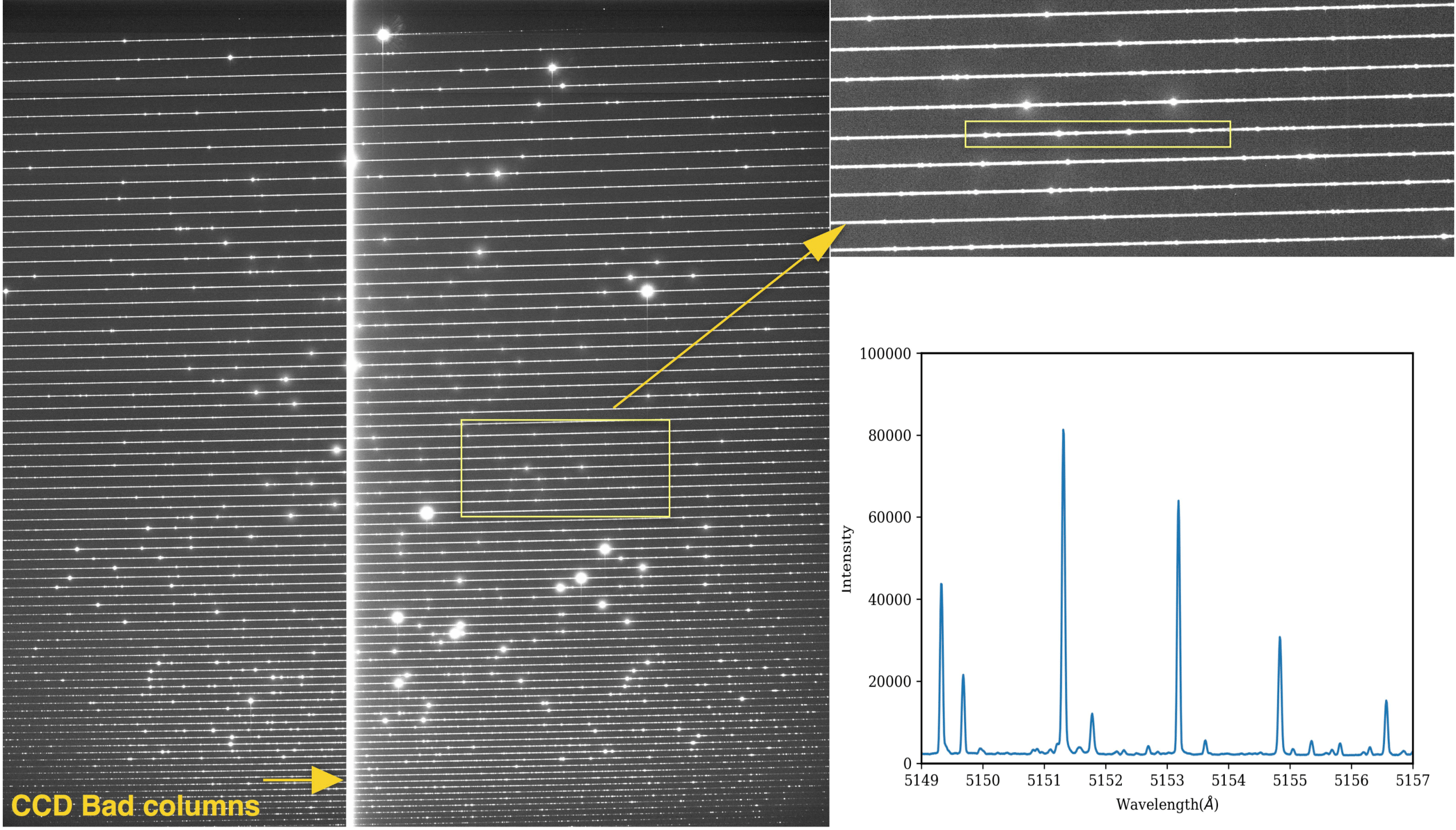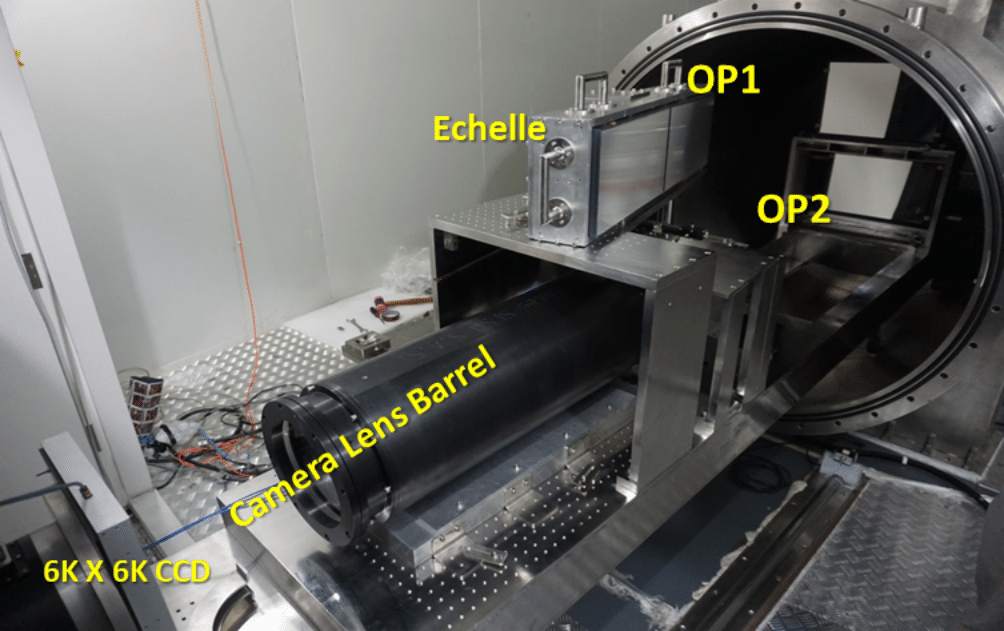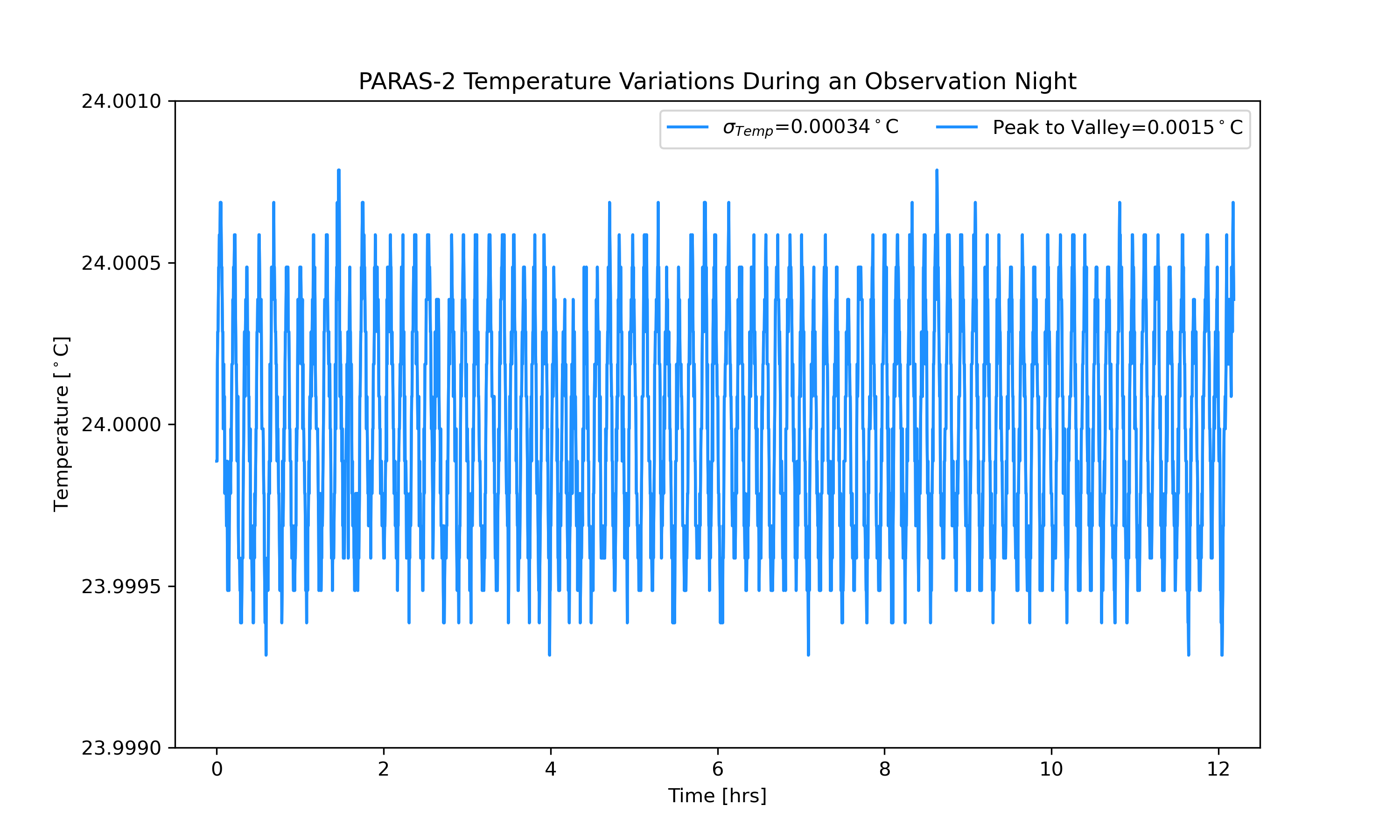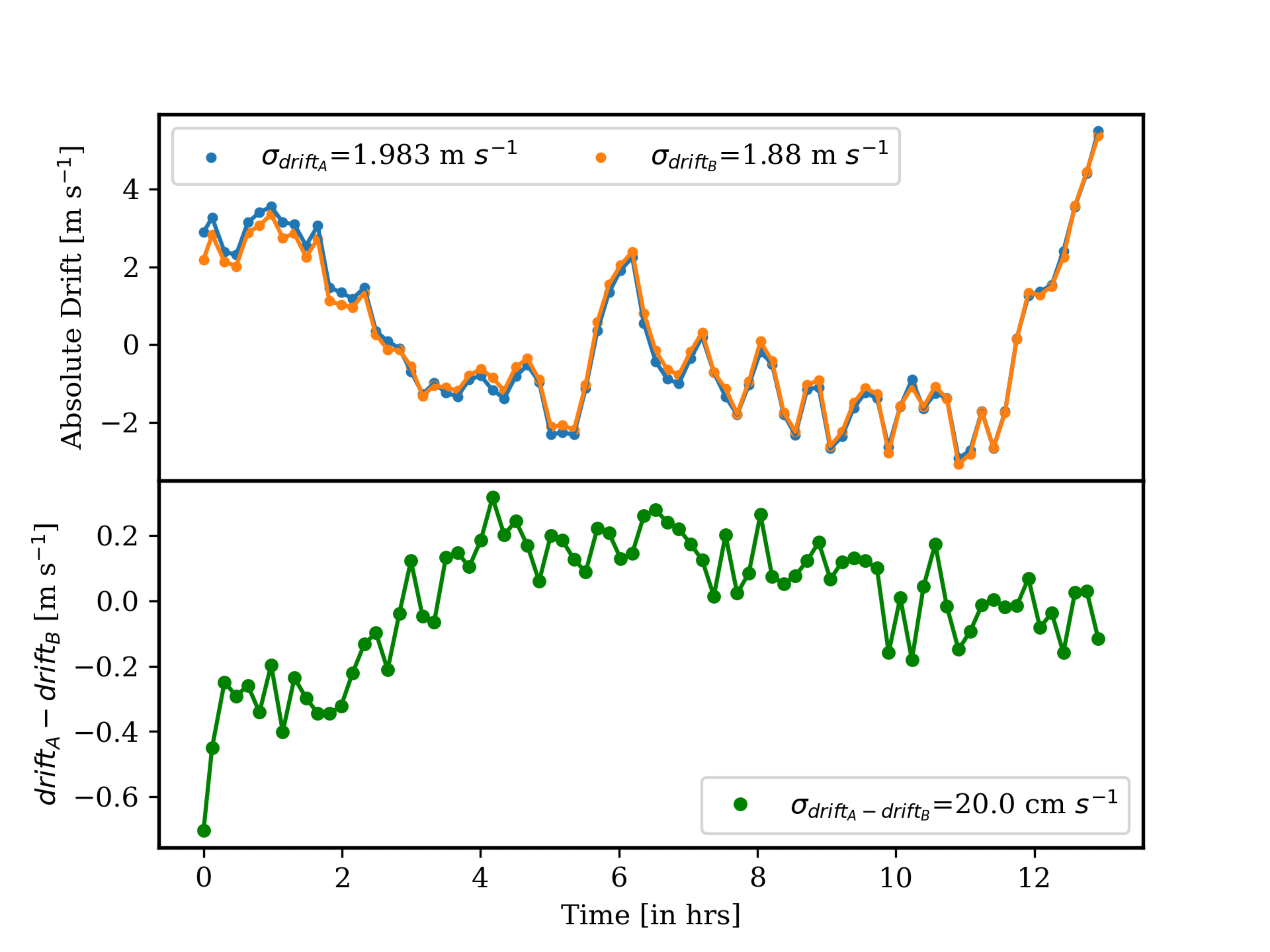PARAS-2 (PRL Advanced Radial velocity All Sky Search-2)
The PRL Advanced Radial-velocity All-sky Search-2 (PARAS-2) is a cutting-edge fiber-fed spectrograph integrated with the PRL 2.5m telescope, constituting a significant advancement over its predecessor, PARAS, situated on the PRL 1.2m telescope. Distinguished as the first highly stabilized spectrograph of its kind within the nation and one of the select few globally, PARAS-2 was conceived with the primary objective of achieving sub-m/s precision in radial velocity (RV), a crucial capability for the detection and characterization of super-Earths or massive planets orbiting G and K dwarf stars. Initiated in mid-2018, the development project culminated in the successful installation of the spectrograph at the telescope site in mid-2022.
This state-of-the-art fiber-fed spectrograph boasts an impressive spectral resolution of R∼107,000 and exhibits remarkable versatility by covering a broad wavelength range from 380 nm to 690 nm in a single acquisition.

The figure above shows the PARAS-2 echellogram (left) along with extracted UAr spectrum (right-bottom).
The optical and opto-mechanical design optimization of the PARAS-2 was carried out in-house in PRL. The Cassegrain unit of the spectrograph is attached to one of the side ports of the 2.5m telescope, that has tip-tilt to correct for first-order atmospheric seeing. The spectrograph consists of optical elements like R4 echelle grating, M1 & M2 off-axis parabolic mirrors, Grism as cross disperser, Camera lens barrel, and a back-thinned CCD of 6144 X 6190 pixels housed in a customized Dewar designed by PRL. There are two fibers, called the Star-fiber (or A-fiber) and the calibration fiber (or B-fiber) respectively which are a combination of octagonal and circular cores with a 75 μm diameter and a total length of approximately 40 meters. They serve as a channel for transferring light from the telescope focal plane to the spectrograph pupil plane.

Shown above is an internal perspective of the vacuum chamber showcasing the secure placement of optical components, including the echelle, Off-axis Parabolic mirrors (OP1 and OP2), the camera lens barrel, and the detector, firmly positioned on the optical bench.
In the realm of radial velocity (RV) measurements, the sensitivity to minute environmental changes is paramount. Even a slight alteration, such as a 1 mbar shift in pressure or a 1 °C fluctuation in temperature, can introduce RV variations on the order of 100 m/s. PARAS-2, designed for precise radial velocity (RV) measurements, is maintained in a controlled environment to counteract the sensitivity of RV readings to minimal environmental changes. Housed within a vacuum chamber, designed in-house, and tested rigorously, the spectrograph remains stable at 0.005 ± 0.0005 mbar during observations. The vacuum chamber can reach 5e-06 mbar, stabilizing at 5e-03 mbar for approximately 18 hours. Temperature control is ensured through two concentric cuboidal chambers (an inner and outer chamber) and a reinforced concrete pier for vibration isolation. A sophisticated PID controller employs a heating and cooling mechanism to maintain the temperature at 18 °C with 0.5 °C precision in the outer chamber. The spectrograph, controlled by an in-house-developed controller, stays at a precise 24 °C with 0.001 °C precision. This comprehensive thermal regulation guarantees the optimal performance of the PARAS-2 spectrograph.

The above figure displays the temperature variation over one typical observing night (Set-point 24 °C), peak-to-valley variation is 0.0015 °C, and RMS variation is 0.00034 °C.
Employing the simultaneous calibration technique with Uranium Argon Hollow Cathode Lamps (UAr HCL), PARAS-2 achieves a remarkable radial velocity (RV) precision of 50 cm/s or better. A meticulous examination involving a series of sequential UAr-UAr spectra, generated by illuminating both the Star-fiber and the calibration fiber with the UAr HCL, was conducted to assess the instrument's stability. The results of this analysis reveal a consistent dispersion in the inter-fiber drift within the range of 30-50 cm/s. This noteworthy finding serves as compelling evidence that PARAS-2 attains a level of precision on the order of sub-m/s.

Upper Panel: This illustration depicts the absolute drift in both A and B fibers over time. Notably, the dispersion in absolute drift remains at approximately 2 m/s for both fibers. Lower Panel: The figure exhibits the inter-fiber drift between A and B fibers over a 12-hour duration, measured in m/s using spectra acquired with Uranium Argon Hollow Cathode Lamps (UAr HCL) in both fibers. The dispersion of inter-fiber drift for the specified duration is recorded at 20 cm/s.
Future Work:
The current engineering-grade CCD utilized in PARAS-2 features a 50-pixel wide bad column. With a measured quantum efficiency (QE) of 95.4% at 400 nm, 90.9% at 500 nm, and 90.8% at 650 nm, the team plans to upgrade to a scientific-grade CCD (Grade Zero) with a QE exceeding 90% across PARAS-2's wavelength range in the near future.
Despite the use of octagonal fibers, non-uniform illumination of starlight at the spectrograph pupil plane persists during on-sky RV measurements. To address this, the team is currently conducting engineering tests, and by early 2024, a double scrambler will be installed, aiming to minimize RV dispersion to 50 cm/s on sky on bright targets. Additionally, the team is in the process of integrating a Fabry-Perot etalon for precise wavelength calibration in PARAS-2.
Publications